INDIAN ARMED FORCES CHIEFS ON
OUR RELENTLESS AND FOCUSED PUBLISHING EFFORTS

SP Guide Publications puts forth a well compiled articulation of issues, pursuits and accomplishments of the Indian Army, over the years

I am confident that SP Guide Publications would continue to inform, inspire and influence.

My compliments to SP Guide Publications for informative and credible reportage on contemporary aerospace issues over the past six decades.
Carter visit — new roadmap for defence relationship
- Joint work on mobile electric hydro power sources
- Cooperation in jet engines, aircraft design etc
- Three foundational agreements — sticky points
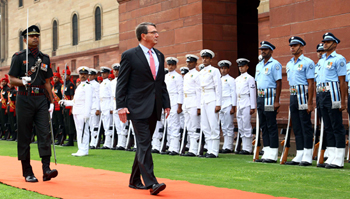
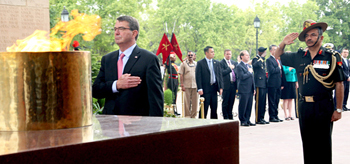
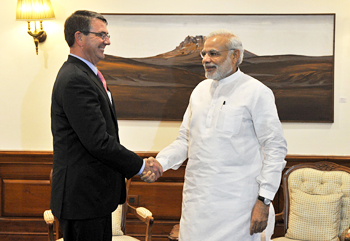
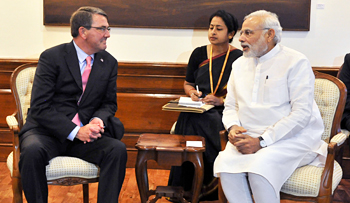
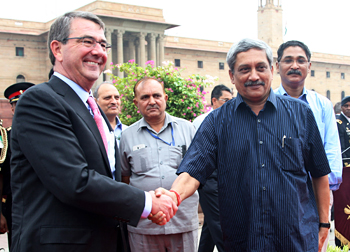
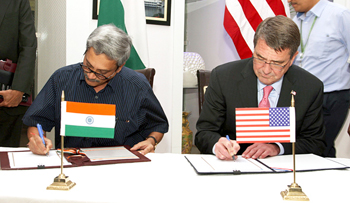
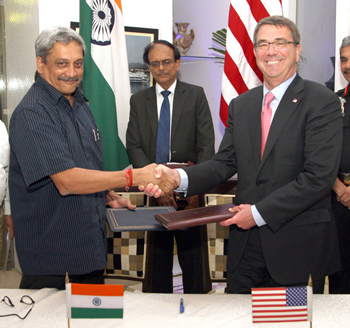
The outcome of the much-touted visit (June 2 to 4, 2015) of the US Defence Secretary Dr Ashton Carter was on expected lines. Both the countries had agreed during the Republic Day visit of the US President Barack Obama on the renewal of the defence framework agreement for 10 more years, till 2025. And the final step of inking the agreement (2015 framework for the India-US defence relationship) , which builds upon the previous framework and successes to guide the bilateral defence and strategic partnership for the next 10 years, was left to the visit of Dr Ashton Carter.
The visit was much more significant than putting the seal of approval of both the defence ministers. The visit of the US Defence Secretary was in itself a signal and message to the regional powers especially China, that both US and India are slowly realigning their policies on Asia-Pacific region. Both US and India see convergence on Asia’s ‘Rebalancing policy’ and India’s Act East policy. This is why during the visit of President Obama a separate statement on the joint vision of Asia Pacific region was issued. Hence, the US side described Carter’s visit to India as part of his focus on the US rebalance to Asia.
Cooperation under Defence Technology and Trade Inititiative (DTTI)
Though the US Defence Secretary met the Prime Minister Narendra Modi, the External Affairs Minister Sushma Swaraj and the National Security Advisor Ajit Doval , the substantive talks on deepening the defence cooperation was with his Indian counterpart Manohar Parrikar. The joint press release issued after the bilateral delegation level talks convey the impression that both countries will jointly work on the ‘mobile electric hybrid power sources’ and the next generation protective ensembles under the Defence Technology and Trade initiative(DTTI). The release says that the defence framework agreement also recognizes the transformative nature of the DTTI. With the Indian NSA, Carter is reported to have discussed the increasing aggressiveness of China in South China Sea.
Both the countries, as agreed during the visit of President Obama, agreed to expedite the discussions to take forward the cooperation in jet engines, aircraft carrier design and construction and other areas. They also agreed to pursue co-development and co-production of projects that will offer tangible opportunities for American defence industry to build defence partnership with Indian industries including manufacturing under the ‘Make In India’ programme. Both the countries had announced four pathfinder projects- the Raven mini unmanned aerial vehicles; roll- on roll- off mission modules for C-130J Super Hercules transport aircraft; mobile electric hybrid power sources and chemical biological warfare protection gear. The US is also reported to have offered the Scorpion light attack aircraft which can also be used as an intermediate jet trainer.
Strengthening defence capabilities
The two countries also agreed to continue their efforts to enhance bilateral cooperation in areas of mutual interest, such as maritime security and knowledge partnership in the field of defence. The new framework agreement provides avenues for high level strategic discussions, continued exchanges between armed forces of both countries, and strengthening of defence capabilities.
The previous ten year agreement between India and US inked in 2005, facilitated the transfer and sale of such high end products like the C-17 Globemaster, C-130 Hercules, the Harpoon anti-ship missiles, the fire finder radar etc worth US$ 10 billion and the new framework agreement will facilitate even more. The Indian defence ministry has already cleared the import of 22 Apache attack helicopters, 16 heavy lift Chinook helicopters and the joint production of next generation Javelin anti tank missiles. Many more weapon systems will be in the pipeline.
Three foundational agreements It is not all hunky dory in bilateral relations. India has expressed its annoyance over the US transfer of more US weapon systems and advanced weapon platforms like the F-16s and also the Harpoon missiles to Pakistan. This gives the impression that US wants to keep both the rivals in good humor and continue to keep the US war machine live and ticking. Parrikar had expressed his resentment on US weapon sales to Pakistan, before the media, even before he met Carter. Also, there are other hitches in further pursuing the DTTI as the US wants Indian signature on three foundational agreements. The US has said so very often that Indian signatures on the agreements will facilitate the transfer of weapons and technology to Indian industries. The agreements are- CISMOA (communication interoperability and security memorandum of agreement); BECA (basic exchange and cooperation agreement for geo-spatial cooperation) and Logistics Supply agreement (LSA). India is avoiding signatures on these as they lay down hard conditions on transfer and use of US supplied weapons and technology. That means that if a war breaks out against India, US will allow the use of US origin weapon systems only if the rival country is not an US ally. Also the US will conduct regular checks and verification of such weapon systems regarding its use.
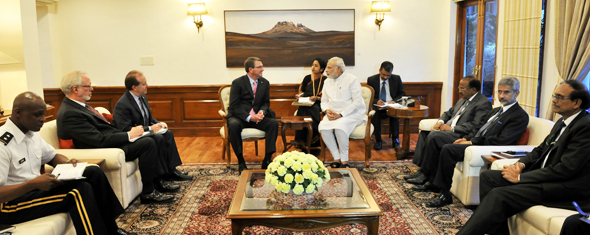
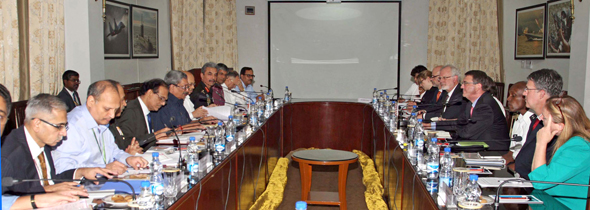
However, the US must have by now realized the compulsions of the Indian government in not acceding to those three foundational agreements. India would never want its strategic autonomy to be surrendered before the US administration. Considering the sensitive relations with China, India also would not like to give an impression that India has fully allied with the Americans. This is why India has avoided the invitation to Japan in the forthcoming bilateral Malabar Naval exercises, though India and the US have conducted very advanced level bilateral exercises, which also encompasses the deployment of nuclear submarines and aircraft carriers. The Malabar exercises began in 1992, in the aftermath of the end of the Cold War in 1992. It continued till 1997 and after May 1998 Pokaran nuclear explosions, the US cancelled all the bilateral military exchanges and even stopped the sale of weapon locating radar made by Hughes. However things changed once again in bilateral diplomatic and defence relations after the 9-11 terror attack on the twin towers of New York. The Americans resumed not only the Malabar exercises but also engaged in bilateral air and army exercises. They also cleared the sale of weapon locating radar in 2004 to the Indian Army, the absence of which was greatly felt during the Kargil war of 1999. The defence relationship continued to deepen and the US has now emerged as major weapon supplier to India.
Armed forces exchanges
Now under the renewed framework for defence partnership, the exchanges between the armed forces will be deepened and widened. The new framework has charted a new roadmap for defence cooperation, which ranges from collaboration in maritime security, joint exercises and intelligence sharing to co-development and co-production of weapon systems and technologies.
Carter has contributed a lot to strengthening the bilateral defence partnerships by spearheading the DTTI mechanism in his earlier capacity as the Deputy Secretary of Defence in the Pentagon. Now, in his role as the Defence Secretary, he is expected to push this even more strongly.
Before arriving in New Delhi, Carter had made a significant visit to the port city of Vishakhapatnam, where the headquarters of the Eastern Naval Command is situated. In Vishakhapatnam he also toured the INS Sahyadri, the indigenous stealth frigate. According to one US official, Carter’s trip to Vishakhapatnam showcased his commitment to maritime security and the need for a regional security architecture that creates transparency and trust among regional powers.





